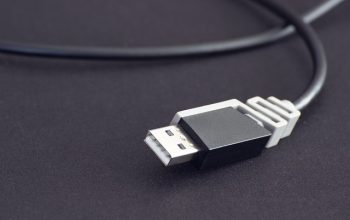Navigating the vehicle title transfer process can be a daunting task for new vehicle owners. This article demystifies the steps involved in transferring a car title, offering clarity and guidance for a seamless transition. Whether you’re a first-time buyer or an experienced owner, understanding DMV title transfer requirements across different states is crucial. We’ll explore the variations in title transfer fees and costs from one state to another, ensuring you’re well-prepared for the financial aspects of the process. Additionally, learn how to efficiently and compliantly complete a title transfer after car purchase with our tailored checklist designed to streamline this critical administrative task. With these tools at your disposal, you can confidently handle vehicle ownership changes without unnecessary delays or penalties.
- Navigating the Vehicle Title Transfer Process: Essential Steps and Considerations
- Understanding DMV Title Transfer Requirements Across Different States
- Breaking Down Title Transfer Fees and Costs Variations by State
- Streamlining the Car Title Transfer After Purchase for Efficiency and Compliance
- Utilizing a DMV Title Transfer Checklist for a Seamless Process
Navigating the Vehicle Title Transfer Process: Essential Steps and Considerations

Navigating the vehicle title transfer process is a critical task for both new car owners and sellers. The DMV title transfer requirements can vary significantly from state to state, necessitating careful attention to each jurisdiction’s specific regulations. To initiate the transfer, one must complete the appropriate forms provided by their local Department of Motor Vehicles (DMV). These documents often include a bill of sale, proof of insurance, odometer disclosure statement, and a valid photo ID. Additionally, obtaining the correct title transfer fees and costs is essential, as these can differ substantially between states and even among counties within a state. Prospective transferees should prepare for these financial obligations to avoid delays or penalties that can arise from non-payment.
Understanding how to transfer a car title efficiently involves several key steps. Firstly, gather all necessary documentation, including the current vehicle title if available, as some states require a lienholder’s release if there is an outstanding loan on the vehicle. Next, submit these documents to the DMV along with the required fees. Some states may also demand an emission and safety inspection certificate before finalizing the transfer. After submitting the paperwork, it’s imperative to monitor the status of your application to ensure that all steps are completed in a timely manner. Utilizing a DMV title transfer checklist can help streamline this process, ensuring that no critical step is overlooked and that the transition from seller to buyer is smooth and compliant with all legal requirements.
Understanding DMV Title Transfer Requirements Across Different States

Navigating the vehicle title transfer process can be a daunting task for many individuals due to the varying DMV title transfer requirements across different states. Prospective vehicle owners must familiarize themselves with the specific legal and procedural nuances of their state’s Department of Motor Vehicles (DMV). Each state mandates its own forms, documentation, and timelines for transferring titles, which can include a bill of sale, proof of insurance, odometer disclosure statement, and other relevant paperwork. The process also encompasses addressing title transfer fees and costs, which are subject to change and vary significantly from one state to another. These financial considerations are integral to the process, as failure to complete the transaction with the appropriate fees could result in legal complications or delays. To expedite the title transfer after car purchase, it is advisable to use a comprehensive DMV title transfer checklist tailored to your state’s regulations. This checklist can help ensure all necessary steps are taken and documentation is complete before proceeding to the DMV office or submitting online applications. Utilizing such resources helps demystify the process, making the transition of vehicle ownership both more efficient and less stressful.
Breaking Down Title Transfer Fees and Costs Variations by State

The vehicle title transfer process is a critical step in the ownership transition of a car, and it involves navigating through various state-specific DMV title transfer requirements. Each state has its own set of protocols that must be followed to legally transfer a title, which can include a mix of forms, inspections, and fee payments. Title transfer fees and costs are subject to significant variations from one state to another, often influenced by local laws, the type of vehicle, and additional taxes or documentation charges. For instance, the process may require a notarized bill of sale in some states, while others might necessitate proof of insurance and emission tests. Understanding the specific title transfer fees and costs applicable in your region is crucial for a timely and compliant transaction. This is particularly important after purchasing a used vehicle, where failure to complete the process correctly could result in penalties or the inability to register the vehicle in your name. To facilitate a smoother transfer, it’s advisable to consult the DMV’s official website for your state or contact them directly for the most accurate and up-to-date information regarding title transfer fees and costs, forms required, and any additional steps involved in the process. A well-prepared DMV title transfer checklist can serve as a guide to ensure all necessary actions are taken in the correct order, helping you avoid oversights and streamline the vehicle title transfer process.
Streamlining the Car Title Transfer After Purchase for Efficiency and Compliance

When purchasing a vehicle, navigating the vehicle title transfer process is a critical step that ensures both legal compliance and ownership clarity. The DMV title transfer requirements can vary significantly from state to state, necessitating attention to detail during this transaction. To streamline the car title transfer after purchase, it’s imperative to gather all necessary documentation promptly. This typically includes the completed application for title and registration, proof of vehicle sale, a valid photo ID, odometer disclosure statement (if applicable), and any required emissions or safety inspection certificates. Additionally, be prepared for title transfer fees and costs, which can differ across jurisdictions, adding another layer of importance to understanding your local DMV’s fee structure. To expedite the process, consider utilizing online services offered by many states’ DMVs, where available, as they can provide faster processing times compared to mail-in or in-person submissions. By familiarizing yourself with the specific requirements and preparing all paperwork ahead of time, you can ensure a smoother transition of vehicle ownership and avoid potential penalties or delays that might arise from an improper transfer. A DMV title transfer checklist is an invaluable resource to help you keep track of each step involved in the process, ensuring both your legal obligations and personal convenience are met when transferring a car title after a purchase.
Utilizing a DMV Title Transfer Checklist for a Seamless Process

Navigating the vehicle title transfer process can be streamlined with the aid of a comprehensive DMV title transfer checklist. This indispensable tool ensures that all necessary steps are accounted for, from gathering the required documentation to understanding the DMV title transfer requirements specific to your state. A common oversight in the title transfer process is failing to account for the varying title transfer fees and costs associated with the transaction. These can differ significantly from one jurisdiction to another, so it’s crucial to budget accordingly and include these expenses on your checklist. By having a detailed checklist, you can avoid common pitfalls, such as untimely paperwork submissions or incomplete applications that could lead to unnecessary delays or penalties. The checklist acts as a roadmap, guiding you through each stage of the process, including how to transfer a car title after a purchase. It prompts you to prepare and submit all mandatory documents, such as proof of ownership, odometer disclosure statements for used vehicles, and identification, while also ensuring that the correct forms are filled out accurately. Utilizing this resource not only expedites the transfer process but also provides peace of mind, knowing that every ‘t’ is crossed and every ‘i’ is dotted in compliance with your state’s DMV regulations.
Navigating the vehicle title transfer process can be daunting for new vehicle owners due to the varying DMV title transfer requirements across different states. However, understanding these steps is crucial for a timely and compliant transaction. This article has outlined the essential steps of the process, highlighted the importance of adhering to state-specific regulations, and demystified the variations in title transfer fees and costs. By utilizing a comprehensive DMV title transfer checklist post-purchase, vehicle owners can streamline the process, ensuring they meet all necessary criteria without delay or incurring unwanted penalties. For a smooth transition of car ownership, it’s imperative to follow these guidelines, making the most of the resources available to facilitate this critical step in vehicle ownership.



